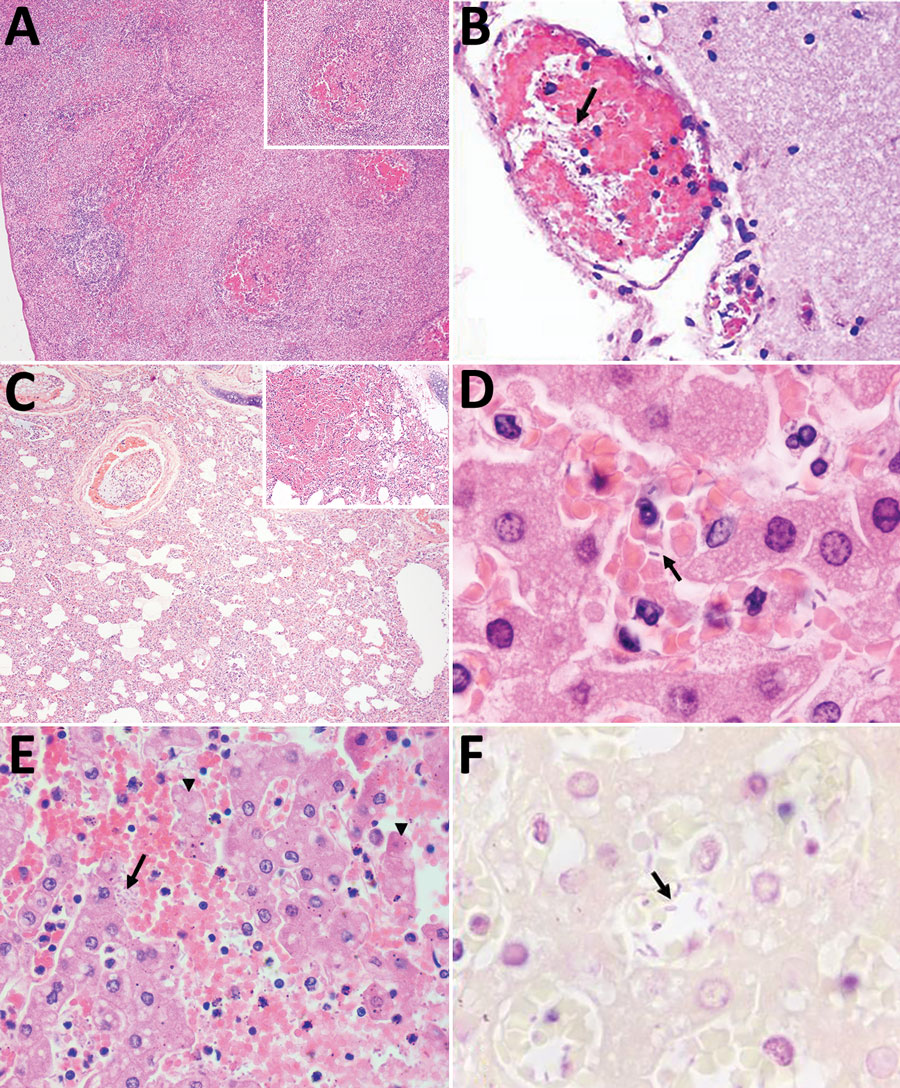Volume 26, Number 12—December 2020
Dispatch
Hypervirulent Klebsiella pneumoniae as Unexpected Cause of Fatal Outbreak in Captive Marmosets, Brazil
Figure 1

Figure 1. Microscopic findings of histological and histochemical examination of tissue samples from captive marmosets in investigation of a fatal epizootic caused by highly virulent Klebsiella pneumoniae sequence type 86 strain P04 in Brazil, 2019. A) Spleen shows necrosis in germinal centers, suppurative splenitis, and hemorrhage (inset: necrosis in germinal center). Hematoxylin and eosin stain (H&E); original magnification ×4. B) Brain (meninges) shows bacterial rods inside vascular lumen (arrow). H&E stain; original magnification ×40. C) Lung shows sinterstitial pneumonia (H&E stain; original magnification ×4) and alveolar hemorrhage (inset; H&E stain; original magnification ×10). D–F) Liver samples. D) Numerous intravascular bacilli (arrow). H&E stain; original magnification ×100. E) Hepatocellular necrosis (arrowheads) associated with numerous bacterial rods (arrow) and neutrophils in the sinusoids. H&E stain; original magnification ×40. F) Sinusoids filled with gram-negative bacterial structures (arrow) and neutrophils. Gram stain; original magnification ×1,000.